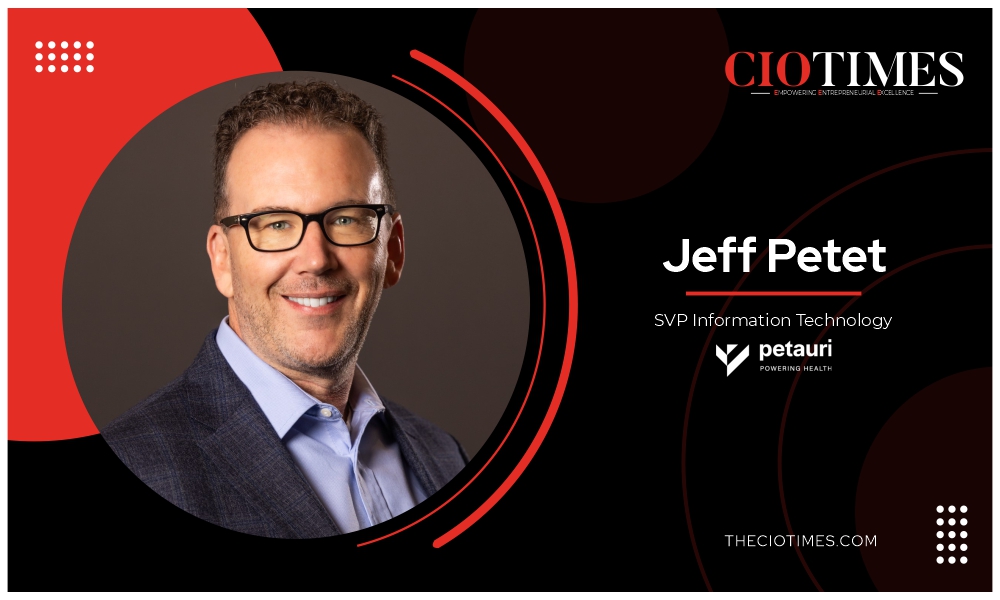Christoph Guger is a trailblazer in the field of neurotechnology, transforming the way we understand and interact with the human brain. As the founder and CEO of g.tec Medical Engineering, he has been at the forefront of developing cutting-edge brain-computer interface (BCI) systems that bridge the gap between neuroscience and technology. His groundbreaking innovations, such as real-time EEG analysis and advanced neurorehabilitation tools, are revolutionizing healthcare by enabling stroke recovery, brain mapping, and neural rehabilitation.
With a relentless commitment to pushing the boundaries of science, Christoph Guger is not only shaping the future of BCI technology but also redefining how humans connect with machines to improve lives globally.
The BCI Trailblazer
Christoph‘s journey into neurotechnology and brain-computer interfaces (BCIs) began with a deep fascination for understanding the human brain and its vast potential. Early in his career, he was torn between working in renewable energy and neurotechnology, but he ultimately chose BCIs because of the opportunity to extract meaningful information directly from the brain and transform it into actionable insights.
Christoph co-founded g.tec medical engineering, a company dedicated to developing cutting-edge BCI systems, neurotechnology solutions, and medical applications that help people regain lost functions, control devices with their thoughts, and advance neuroscience research. Over the years, the company has created high-performance EEG, ECoG, and invasive BCI systems that are now widely used in research institutions, hospitals, universities, and industry projects worldwide.
One of Christoph’s proudest achievements is organizing the BCI & Neurotechnology Spring School, the largest global event in the field, with over 80,000 participants and lectures from elite universities and industry leaders. Additionally, g.tec’s technology has played a crucial role in projects related to stroke rehabilitation (recoveriX), disorders of consciousness (mindBEAGLE), and communication for locked-in patients.
Groundbreaking Innovations
g.tec medical engineering is a global leader in brain-computer interfaces (BCIs), neurotechnology, and biosignal processing. Since its founding, the company has been at the forefront of developing high-performance EEG, ECoG, and invasive BCI systems that enable groundbreaking applications in clinical research, rehabilitation, neuroscience, and human augmentation.
Its product portfolio includes:
- BCI Systems: Cutting-edge EEG-based BCIs, including the Unicorn Hybrid Black, g.Nautilus, and g.HIamp for research, medical applications, and real-world use.
- Neurorehabilitation Solutions: recoveriX, the pioneering BCI-based rehabilitation system for stroke patients, and mindBEAGLE, a system designed to assess and communicate with patients with disorders of consciousness.
- High-Gamma Mapping & Neurosurgery Tools: cortiQ, a real-time brain mapping system used in hospitals for epilepsy surgery and functional localization.
- BCI Software Suites: g.HIsys for signal processing and g.Pype, a Python-based interface for developing custom BCI applications.
What truly sets g.tec apart is the firm’s ability to bridge the gap between research and real-world applications. It doesn’t just build BCIs for the lab—it creates practical solutions that are used in hospitals, rehabilitation centers, research institutions, and commercial applications.
Additionally, g.tec’s commitment to education and community building is unmatched. The BCI & Neurotechnology Spring School is the largest and most successful event in the field, connecting thousands of researchers, engineers, and innovators worldwide. Its devices are used in BR41N.IO hackathons, fostering the next generation of BCI developers.
Leading the Neurotech Revolution
25 years ago, real-time BCI systems didn’t exist. Researchers used to collect large amounts of brain data, train neural networks offline, and then try to apply the models later for real-time feedback. But this approach didn’t work—the brain is too dynamic, and models trained without real-time adaptation failed in practical applications.
Christoph took a completely different approach. Instead of long training phases, he focused on a real-time system that could adapt quickly. He designed a process where the BCI would train for just five minutes and then immediately provide feedback. This instant reinforcement allowed users to learn and improve their brain control within a short timeframe. The results were groundbreaking, proving that real-time adaptation was the key to successful BCI applications.
The biggest challenge for Christoph was convincing the scientific community that real-time BCIs were not just possible but necessary for practical applications. Many researchers were deeply invested in their offline models. However, by demonstrating real-time control in communication, motor rehabilitation, and cognitive assessments, he proved the effectiveness of real-time BCI. Today, this approach is standard practice in the field, and it laid the foundation for the high-performance BCI systems g.tec develops today.
Accessible and Impactful Solutions
g.tec is committed to making high-performance BCI and neurotechnology solutions accessible to researchers, clinicians, and developers worldwide. It achieves this through a combination of user-friendly design, comprehensive software tools, global collaborations, and education initiatives.
- Ease of Use & Plug-and-Play Systems: g.tec’s devices, such as the Unicorn Hybrid Black and g.Nautilus, are designed for easy setup and real-time operation, allowing researchers and clinicians to start recording brain activity without complex configurations. This ensures that both experts and newcomers can use the systems effectively.
- Advanced Software & Open APIs: g.tec provides powerful tools like g.HIsys Professional and g.Pype Python Interface, enabling users to analyze brain signals, develop custom applications, and integrate AI and machine learning models. This flexibility ensures that the technology remains relevant for cutting-edge research and clinical applications.
- Global Reach & Partnerships: g.tec works with leading universities, hospitals, and research institutions across the world. It actively supports large-scale projects, clinical studies, and real-world BCI applications, making its technology a critical tool in neuroscience and neurorehabilitation.
- Education & Training: To empower the next generation of BCI researchers and clinicians, it organizes events such as the BCI & Neurotechnology Spring School and BR41N.IO Hackathons. These programs provide hands-on experience with g.tec’s technology and foster collaboration among experts in the field.
By continuously innovating, simplifying access to high-quality EEG and BCI tools, and fostering a global community, g.tec ensures that its neurotechnology remains at the forefront of research and clinical impact worldwide.
Reading the Industry
Christoph breaks down the biggest challenges and opportunities in the neurotechnology field today as:
Challenges:
- Bridging Research and Real-World Applications: Many breakthroughs in neurotechnology remain within research labs and do not make it to real-world clinical or consumer applications. Translating BCI research into practical solutions for rehabilitation, communication, and cognitive enhancement is a major challenge.
- Regulatory Hurdles: Medical-grade BCI systems require strict approvals from regulatory bodies such as the FDA and CE. The time and cost associated with certification can slow down innovation.
- Data Processing & AI Integration: While AI and machine learning hold great potential for neurotechnology, real-time, high-accuracy BCI decoding is still a challenge. The field must continue improving algorithms for faster and more reliable brain signal interpretation.
- Public Perception & Ethical Concerns: Many people still view neurotechnology as experimental or even intrusive. Raising awareness about the benefits and safety of BCIs is crucial to wider adoption.
Opportunities:
- BCI for Healthcare & Rehabilitation: Technologies like recoveriX for stroke rehabilitation and BCIs for disorders of consciousness are proving their value in clinical settings. The opportunity lies in expanding their use worldwide.
- Non-Invasive BCIs for Everyday Use: With advances in dry electrodes and portable EEG, non-invasive BCIs are becoming more practical for daily applications in gaming, mental health, and productivity enhancement.
- Personalized Neurotherapy: Neurotechnology is paving the way for personalized treatments for epilepsy, depression, and cognitive decline. AI-powered adaptive neurostimulation could be the future of brain health.
- Education & Workforce Expansion: As BCI technology becomes more mainstream, there is an opportunity to train more professionals and researchers in neurotechnology through programs like the BCI & Neurotechnology Spring School.
“While neurotechnology faces technical, regulatory, and societal challenges, the opportunities for medical breakthroughs, real-world applications, and widespread adoption have never been greater,” opines Christoph.
Unlocking Human Potential
Christoph is driven by the endless potential of the human brain and the challenge of extracting more and more information from it. Every breakthrough in neurotechnology brings us closer to understanding how the brain works and how we can use this knowledge to improve lives—whether in medicine, communication, or cognitive enhancement.
Not so long ago, EEG signals were recorded on music tapes and had to be digitized before they could even be processed. This process was slow and inefficient, limiting the insights researchers could gain. Today, technology has advanced tremendously—real-time EEG and BCI systems provide instant feedback, making applications like stroke rehabilitation, brain-controlled communication, and cognitive performance enhancement possible.
“But we are still only scratching the surface of what’s possible. My motivation comes from pushing the limits further—developing faster, smarter, and more intuitive BCIs that seamlessly integrate with human intention and expand what we can do with our brains. Neurotechnology is no longer a futuristic dream—it’s a reality that is transforming lives today, and I am excited to drive this revolution forward,” says Christoph.
Driving Innovation While Shaping Business Success
For Christoph, balancing the technical and business aspects of his role comes down to one key principle: listening to customers. Understanding what researchers, clinicians, and developers need is the foundation of innovation at g.tec. Rather than building technology for the sake of it, he focuses on real-world applications—solutions that solve actual problems and push the boundaries of what’s possible in neurotechnology.
On the technical side, Christoph works closely with g.tec’s R&D team to ensure that they are developing cutting-edge BCI systems that provide high-quality, real-time EEG data with intuitive software solutions. At the same time, as an entrepreneur, he makes sure that g.tec’s innovations are not only scientifically advanced but also commercially viable, scalable, and easy to use.
He achieves this balance by staying deeply involved in both aspects—engaging with researchers and customers to understand their pain points, guiding the development teams, and ensuring that g.tec continues to lead the way in neurotechnology.
Neurotech Breakthroughs
With Christoph at the helm, g.tec is continuously pushing the boundaries of neurotechnology to create life-changing solutions. Some of its most exciting breakthroughs include:
- recoveriX: The BCI-based neurorehabilitation system helps thousands of patients recover motor function after stroke, multiple sclerosis (MS), Parkinson’s disease, and even long COVID. By combining brain-computer interface technology with real-time feedback, recoveriX enables patients to retrain their brains and regain movement. This is a major step forward in non-invasive, effective rehabilitation.
- cortiQ: This real-time high-gamma mapping system is transforming epilepsy surgery and neurosurgical planning. It allows clinicians to accurately map brain function in patients, including children, improving the precision of epilepsy treatments and prolonging the lives of brain tumor patients by helping neurosurgeons make the best decisions during surgery.
- g.Pangolin: This is a 1024-channel EEG system with an unprecedented resolution, providing neuroscientists with never-before-seen insights into brain activity. This breakthrough is paving the way for advanced brain research, neuroprosthetics, and next-generation BCI applications.
g.tec’s Contribution to Global Healthcare Challenges
In the next decade, g.tec will continue to shape the future of healthcare by making neurotechnology more accessible, precise, and impactful. It focuses on:
- Expanding neurorehabilitation with recoveriX to improve recovery outcomes worldwide.
- Enhancing neurosurgical procedures with cortiQ, helping more patients with epilepsy and brain tumors.
- Revolutionizing brain research with ultra-high-resolution EEG, unlocking new discoveries in neuroscience.
By continuously innovating, it is bringing cutting-edge BCI technology to hospitals, clinics, and research labs worldwide, transforming lives and solving some of the biggest neurological healthcare challenges of our time.
Collaborating for Success
Christoph feels interdisciplinary collaboration is crucial for advancing neurotechnology. The complexity of brain-computer interfaces (BCIs) and their applications in healthcare requires input from a wide range of specialists, including neurosurgeons, neurologists, researchers, clinicians, and industry professionals. At g.tec, he has seen firsthand how such collaborations drive innovation, accelerate product development, and enhance patient outcomes.
For example, g.tec works closely with neurosurgeons like Dr. Kamada in Japan, who helps with the integration of its technology into neurosurgical procedures. Dr. Kamada’s insights allow g.tec to ensure its BCIs are optimally designed for use in complex surgeries, enhancing their efficacy in real-time brain mapping during surgeries.
Similarly, Christoph and g.tec collaborate with Dr. Kai Miller at the Mayo Clinic, a world-renowned expert in neurosurgery and epilepsy, whose work is pivotal in advancing the use of BCIs in brain mapping for epilepsy surgery. His feedback helps them refine their technologies to make them more precise and clinically relevant for neurosurgical interventions.
In the field of neurorehabilitation, they partner with neurologists like Dr. Tim von Örtzen or Dr. Michael Guger, whose expertise in brain recovery helps shape their products for patients with stroke, multiple sclerosis, and other neurological conditions. His research informs the development of BCIs for neurorehabilitation and ensures that g.tec’s products align with the latest clinical standards for patient recovery.
g.tec also collaborates with clinicians like Dr. Rossella Spataro, who is leading the mindBEAGLE project. Dr. Spataro’s work is focused on mental health and neurostimulation, and through this partnership, Christoph aims to create effective solutions for patients with neurological disorders and cognitive impairments.
They also work with industry partners who bring critical expertise in hardware development, software integration, and regulatory compliance. These collaborations ensure that g.tec’s products are cutting-edge, scalable, and ready for broad deployment in clinical settings.
Lessons and Advice for Aspiring Neurotechnology Entrepreneurs
Christoph’s journey as a business leader in neurotechnology emphasizes three core lessons: listening to users, embracing resilience, and fostering a growth mindset.
His success at g.tec stems from developing solutions that directly address the real-world challenges faced by healthcare professionals and patients, ensuring innovation serves a meaningful purpose. Resilience, he notes, is vital—persistence through setbacks is often the key to breakthroughs. A commitment to continual learning and adaptation enables g.tec to remain at the forefront of neurotechnology.
For aspiring entrepreneurs, Christoph advises focusing on solving real problems, building interdisciplinary collaborations, and navigating regulatory landscapes diligently. He also emphasizes the importance of patience and having a clear vision that aligns innovation with impact.
With passion and perseverance, he believes, entrepreneurs can unlock neurotechnology’s transformative potential to revolutionize healthcare and redefine our understanding of the brain.
The Next Frontier
The future of brain-computer interfaces (BCIs) is incredibly promising, with applications that will revolutionize healthcare, communication, and human-computer interaction. In the next decade, Christoph suggests, we will see BCIs becoming:
-
- A Standard Tool in Neurorehabilitation
BCIs will replace traditional rehabilitation methods for neurological disorders. Systems like recoveriX already help patients recover from stroke, multiple sclerosis, Parkinson’s disease, and long COVID. In the future, BCI therapy will be widely adopted in hospitals and clinics, helping millions of people regain lost motor functions and cognitive abilities.
2. Transforming Neurosurgery & Epilepsy Treatment
With cortiQ, we already perform real-time high-gamma mapping to help neurosurgeons make better decisions. As BCI technology advances, brain mapping will become faster, more precise, and completely non-invasive, improving outcomes for epilepsy patients and extending the lives of brain tumor patients.
3. Enhancing Cognitive and Mental Health Treatments
BCIs will be used for mental health applications, such as detecting and treating depression, anxiety, PTSD, and even Alzheimer’s disease. By monitoring brain activity in real-time, BCIs will allow clinicians to develop personalized brain stimulation therapies to restore healthy brain function.
4. Empowering People with Disabilities
In the near future, BCI-controlled neuroprosthetics and assistive devices will enable people with severe physical disabilities to communicate, move, and interact with technology effortlessly—simply by using their thoughts.
5. Expanding into Everyday Applications
Beyond healthcare, BCIs will integrate into daily life, allowing hands-free control of computers, smart devices, and even robotics. This will fundamentally change how we interact with technology and open up new possibilities for education, gaming, and creative industries.
“The ultimate goal is to extract even more information from the brain to understand, enhance, and restore brain functions. Not so long ago, EEG signals were stored on music tapes and had to be digitized manually before they could be analyzed. Today, real-time BCIs process and decode brain activity in milliseconds. The next step is to make BCI technology more powerful, accessible, and seamlessly integrated into human life. BCIs will not only restore lost abilities but also unlock entirely new ways of interacting with the world,” concludes Christoph.
The following sections need to be designed in the PDF:
Finding Inspiration
The quote Christoph absolutely lives by is: “Decide what you want to do and then do it full speed.”
He says:
“This simple yet powerful phrase embodies the essence of determination and focus. Once you have clarity on your goal, it’s essential to pursue it with unwavering commitment and energy. In the fast-paced world of neurotechnology, there are countless distractions and challenges. But if you stay focused on your vision and approach it with full force, you create momentum that can overcome almost any obstacle.
This quote encourages decisiveness, action, and persistence—key ingredients for both personal and professional success. It’s a reminder that success is not just about having great ideas; it’s about executing them with passion and determination.”
Quote: “At g.tec, we continue to push the boundaries of BCI research, bringing scientific breakthroughs into real-world applications that improve lives.”
Quote: “With decades of experience, a strong track record in innovation, and a commitment to turning cutting-edge research into real-world impact, g.tec continues to shape the future of neurotechnology.”
Quote: “Ultimately, success comes from building what people need—and doing it better than anyone else.”





